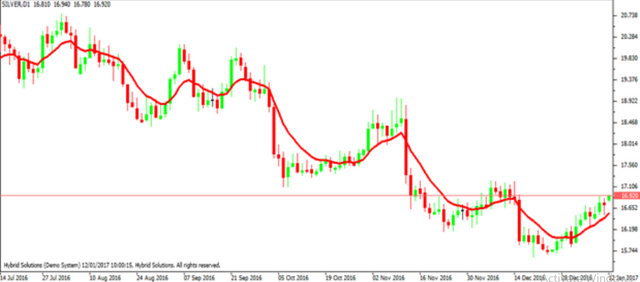EXPONENTIAL MOVING AVERAGE (EMA)
Description
This moving average focuses more on the recent price movement and hence it is considered as more
responsive towards than a simple moving average. The calculation for this is not as simple as the
calculation for simple moving average [SMA]. It is complicated. VertexFX Trader provides the calculation of EMA and hence traders can easily concentrate on other implications rather than on the calculations. EMA turns faster and has less lag than SMA.
How this indicator works
• Use the same rules that apply to SMA when calculating EMA. Keep in mind that EMA is generally
more sensitive to price movement. This can be a double-edged sword. On one side, it can help you
identify trends earlier than an SMA would. On the other hand, EMA will experience more short-term
changes than SMA.
• Use the EMA to determine trend direction, and trade in that direction. When the EMA rises, traders
may want to buy when prices comes near or just below the EMA. When the EMA falls, traders may
consider selling when prices come near or just above the EMA.
• Moving averages can also indicate support and resistance areas. A rising EMA tends to support
prices, while a falling EMA tends to provide resistance to prices. This reinforces the strategy of buying
when the price is near the rising EMA and selling when the price is near the falling EMA.
• All moving averages, including EMA, are not designed to identify a trade at the exact bottom and
top. Moving averages may help you trade in the general direction of a trend, but with a delay at the
entry and exit points. The EMA has a shorter delay than the SMA with the same period.
Calculation
You should notice how the EMA uses the previous value of the EMA in its calculation. This means the
EMA includes all the price data within its current value. The newest price data has the most impact
on the Moving Average and the oldest prices data has only a minimal impact.
EMA = (K x (C - P)) + P
Where:
C = Current Price
P = Previous periods EMA (A SMA is used for the first periods calculations)
K = Exponential

al smoothing constant
The smoothing constant K, applies appropriate weight to the most recent price. It uses the number of
periods specified in the moving average.